
The Teaching And Belief Of Buddhism

Buddha, the Enlightened One
|
|
The word Buddha means the " Fully Enlightened One" or " Awakened One". |
|
|
The title is given to those who have attained supreme and prefect Enlightenment. |
|
|
The Buddha is also know as Buddhist as the 'Perfected One'. |
|
|
The reasons is because the Buddha had wiped out desire, ill-will and ignorance and has overcome all unwholesome actions. |
|
|
He has put an end to suffering and there is no longer bound to the cycle of birth and death. |
|
|
He had shown all beings to the path leading to the end of suffering and to Enlightenment or Niravana |
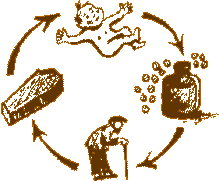
The Cycle of Rebirths
|
|
According to the Buddha's teaching, beings are reborn many times. |
|
|
Buddha had taught that every actions had its cause and effect. |
|
|
The accumulation of merits and demerits affect a person's life cycle. |
|
|
Only those Enlightenment can end Rebirth. |

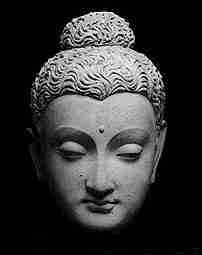
The Four Noble Truths
|
|
1st: The Truth Of Suffering-suffering is a fact of life. (First noble truth includes awareness of all the ramifications of suffering because it encompasses the very nature and essence of suffering) |
|
|
2nd: The Truth of the Cause of Suffering - ignorance hatred and craving are the main cause. |
|
|
3rd: The Truth Of The End Of Suffering -It is possible for suffering to end by removing ignorance and craving. When suffering ends, Enlightenment is attained. (There are three kinds of actions: mental, verbal, and physical. These are subdivided into virtuous and unvirtuous physical actions, virtuous and unvirtuous verbal actions, and virtuous and unvirtuous mental actions) (There are three unvirtuous physical actions: the harming of life, sexual misconduct, and stealing) |
|
|
4th : The Truth OF The Path Leading to the End Of Suffering-The path to the end of suffering is the Middle Way or the Eight-fold Path which can be put into practice. |

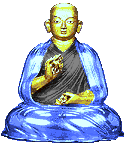
The Noble Eight-fold Path
|
|
Right Understanding -is the knowledge of the Four Noble Truths. In other words, it is the understanding of oneself as one really is. The keynote of Buddhism is this Right Understanding. Buddhism, as much , is based on knowledge and not on unreasonable belief. | ||||||
|
|
Right Thoughts are threefold. They are:
|
||||||
|
|
Right Speech deals with refraining from falsehood, stealing, slandering, harsh words and frivolous talks | ||||||
|
|
Right Livelihood deals with the five kinds of trades which should be avoided by a lay disciple. |
They are:(1) trade in deadly weapons
Right Livelihood means earning ones living in a way that is not harmful to others.
|
|
Right Effort is fourfold, namely:
Effort is needed to cultivate Good Conduct or develop one's mind, because one is often distracted or tempted to take the easy way out of things. The Buddha teaches that attaining happiness and Enlightenment depends upon one's own efforts. Effort is the root of all achievement. If one wants to get to the top of a mountain, just sitting at the foot thinking about it will not bring one there. It is by making the effort of climbing up the mountain, step by step, that one eventually reaches the summit. Thus, no matter how great the Buddha's achievement may be, or how excellent His Teaching is, one must put the Teaching into practice before one can expect to obtain the desired result. |
||||||||
|
|
Right Mindfulness is also fourfold:
Right Mindfulness is the awareness of one's deeds, words and thoughts
|
||||||||
|
|
Right Meditation Meditation means the gradual process of training the mind to focus on a single object and to remain fixed upon the object without wavering. The constant practice of meditation helps one to develop a calm and concentrated mind and help to prepare one for the attainment of Wisdom and Enlightenment ultimately. |
||||||||
|
|
Right Action
It deals with refraining from killing, stealing and unchastity. It helps one to develop a character that is self-controlled and mindful of right of others. The Triple Gem |
||||||||
|
|
Buddha believe that life is a journey and everyone is a traveller heading towards the same direction, Nirvana. |
||||||||
|
|
He find helps in the triple gems.. |
||||||||
|
|
1st :The Buddha- the Teacher who is like a travel guide who gives meaning and direction to the journey of life. He is the Enlightened One |
||||||||
|
|
2nd: The Dharma- the teachings of the Buddha on how to end suffering and attain Nirvana which is eternal bliss |
||||||||
|
|
3rd: The Sangha- The Sangha encourage the followers of the Buddha by setting good examples. They prove that the teaching are not mere theory but can be put into practice and the Niravana is not amyth but can achieved by anyone. |

Practices in Buddhism
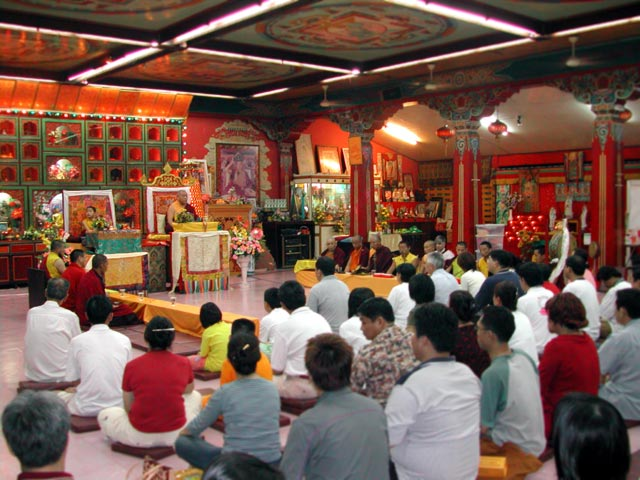
Prayer Session (Puja)
|
|
To respect the Triple Gem, Buddhist had to do a Puja. |
|
|
It is done before the image of the Buddha. |
|
|
The image of the Buddha is been keep for the remembrance that we respect our loves. |
|
|
It reminds the Buddhist that they should strive for Enlightenment. |
|
|
A Buddhist shows respect by standing in front of the image and placing the palm of both together. |
|
|
To express deep veneration, a Buddhist may bow or prostrate before the image of Buddha. |
Making Offering
|
|
The making of offering at a Buddhist shrine is a way of expressing one's appreciation and respect for the triple gem. |
|
|
Offering include: |
|
|
Light in the form of lighted candles to symbolise wisdom or enlightenment as opposed to the darkness of ignorance . |
|
|
Flowers to remind Buddhists that life is not permanent. |
|
|
Incense to show respect for the Triple Gem and to symbolise the spreading of goodness. |
|
|
The giving of food to symbolise generosity. |
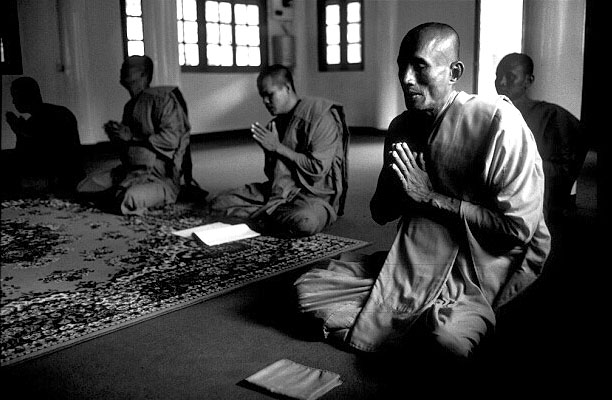
Mediation
|
|
It keeps the mind calm and enables one to concentrates. |
|
|
It develop mindfulness which leads to wisdom |
Dietary Restrictions
|
|
Vegetarianism is encouraged in Buddhism. |
|
|
This is to express respect for life. |
|
|
The taking of alcohol and drugs is prohibited to maintain stability so as to develop mindfulness. |

Symbol Of Buddhism

The Dharmachakra
|
|
The wheel symbolise the Wheel of Buddhist Law, the endless cycle of birth and rebirth. |
|
|
The early Dharma Wheels followed the India tradition having many spokes as shown by this Dvaravati style from the 7th - 9th century. |
|
|
Modern versions of Dharma Wheels often have four spokes, symbolizing the Four Jinas or the four 'moments' in the life of the Buddha; or with eight spokes, or octagonal, symbolizing the Noble Eightfold Path. The spokes sometimes extend beyond the circle, in points. |
|
|
These wheels, represented in Indian art even before the period of King Asoka (272-232 B.C.E.), were generally placed on four lions, back to back, and facing the four cardinal points. |
|
Teachings/ Symbols |